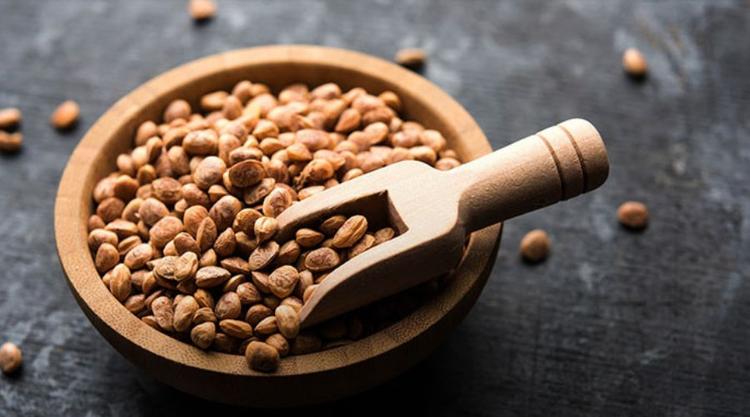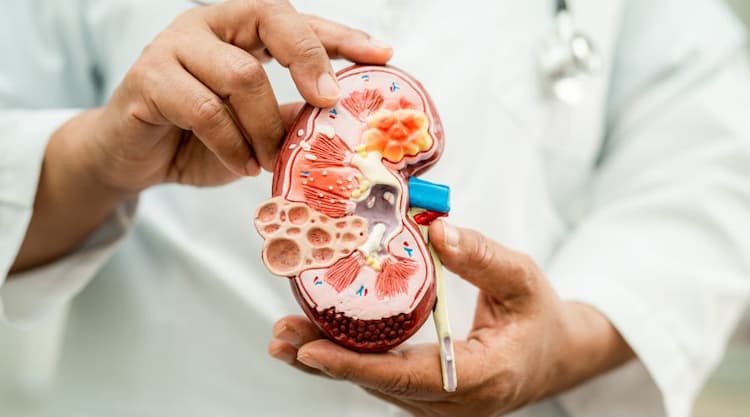Simple Home Remedies for Fungal Infections

Medically Reviewed By
Dr. Ragiinii Sharma
Written By Meenakshi
on Oct 13, 2023
Last Edit Made By Meenakshi
on Mar 18, 2024

No matter how much skin care you follow and how much you take care of the skin, some pesky ailments still find their way to pop up and annoy you. They are called Fungal Infections, and if we put it simply, they are inevitable. Commonly, a Fungal Infection affects one once in their lifetime. But what is it, what causes it, what are the symptoms, and how to treat them? If you are looking for answers to all these questions, you've come to the right place. Read on to know more.
What are Fungal Infections?
Fungal Infection (Mycosis) is a disease caused by fungi in the environment. While many fungi are harmless or even beneficial to your health, some can cause infection when they enter the body and multiply. These affect different body parts, including the skin, nails, hair, mouth, throat, lungs, and other internal organs. Let's explore some of the most common fungal infections:
- Athlete's Foot: The most common and contagious fungal infection that tops the list is Athlete's Foot, which begins from the toes. It causes itching, redness, cracking, and peeling of the skin, often between the toes. While it can affect anyone, certain factors like obesity, diabetes, a weakened immune system, tissue damage or wounds on your feet, etc., increase your risk of developing an athlete's foot.
- Ringworm: Caused commonly by worms, Ringworm is a fungal infection that affects the skin, causing circular red, itchy rashes with a clear center. It spreads via skin-to-skin contact with an infected patient or by touching contaminated objects.
- Yeast Infection: Yeast is a common fungus (candida) found on the skin, digestive system, or vaginal areas, but too much yeast on the skin and the other regions can be a cause of concern. Anyone can get it, but infants, people taking antibiotics, or other health conditions, like HIV or Diabetes, are at higher risk.
- Fungal Nail Infection: Another common Fungal Infection that usually affects toenails and fingernails, making them discolored, thickened, and brittle.
- Systemic Fungal Infection: Last but not least on the list is Systemic Fungal Infection, which affects internal organs and is considered more serious than other infections. It can even be life-threatening if left unaddressed.
These are a few of the most fungal infections, and they can vary in severity and location. They are generally treatable with the right preventable measures, medicines, and hygienic practices. It is clear from the above that these are common, but what mainly causes them? Let's explore them:
Common Reasons For Fungal Infections:
- Warm & Humid Environment: Fungus thrives in warm and moist environments, and high humidity and sweating are the major factors responsible for fungal infections in an individual. Skin folds, Armpits, and Genital Areas are the most common areas of the body that are prone to the infection.
- Poor Hygiene: Not following appropriate hygiene measures is another factor that contributes to a high risk of fungal infections. Therefore, keeping skin clean and dry is essential, especially in sweating-prone areas.
- Weakened Immune System: People with poor immune systems or chronic conditions, like diabetes, HIV, and cancer, are at higher risk of being affected with fungal infection, as these conditions disrupt the body's ability to fight off infections.
- Family History: A family history of fungal infections also makes an individual more susceptible to a fungal infection.
- Direct Contact: Most fungal infections spread through skin-to-skin contact with an infected person; therefore, individuals close to infected individuals are at higher risk.
Understanding the major cause of the infection is essential to take preventive measures and reduce the risk.
So, we have understood what fungal infections are and what causes them, but do we know how to recognize them? Are you aware of the common symptoms of fungal infections? No, that's fine, as we have got you covered. Scroll down to find the common signs or symptoms indicating fungal infection.
Common Symptoms of Fungal Infection:
The symptoms can vary depending on the gender, age, severity, type, and body area affected. However, some common symptoms that most people complain of include the following:
- Itchy Skin
- Redness & Inflammation
- Blisters
- Unexplained pain or discomfort
- Peeling or cracking of the skin
- Unpleasant odor
- Discolored nails
- White patches in the mouth
- Vaginal discharge
- Rashes
It is important to understand these symptoms may vary for every individual and can also indicate some other condition, so it's essential to consult a healthcare practitioner for a proper diagnosis and appropriate treatment.
If you are looking for some common home remedies that can make a difference to help alleviate the discomfort and symptoms associated with the disease, check here below.
Home Remedies For Fungal Infections:
- Honey: For centuries, Honey, thanks to its anti-fungal and anti-inflammatory properties, has been used as a major skin-care ingredient that works wonders as a home remedy for fungal infection. It inhibits the growth of some fungal species and promotes healing.
How to use it?
- Choose raw Honey and check their authenticity.
- Apply a thin layer.
- Keep the area covered.
- Do a patch test.
- Repeat regularly.
Summary: While Honey has been used traditionally to treat fungal infection, it is not a standalone treatment but a supportive measure, and the results may vary for every individual. Therefore, consulting with your healthcare practitioner is essential for managing the condition better.
- Neem Leaves: Another common home remedy that works wonders for helping heal fungal infections is neem leaves. Neem has been used to cure various illnesses, infections, and skin ailments for ages. It is the best for helping treat fungal infections in most cases, especially if used appropriately with care.
How to use it?
- Choose fresh Neem leaves and wash them thoroughly.
- Create a paste and do a patch test.
- Apply gently and leave it for a while.
- Rinse carefully and keep the area clean.
Summary: Neem Leaves are undeniably beneficial as a natural remedy for fungal infection; this is not an alternative to prescribed medicine. It is essential to take advice for better safety and effective results.
- Coconut Oil: Thanks to its anti-fungal and antibacterial properties, it can moisturize and heal the skin. When applied topically, it creates an unfavorable environment for fungal growth and strengthens the skin's natural barrier, making it more resilient to fungal infections.
How to use it?
- Clean the infected area.
- Apply the oil & wait for it to absorb into the skin.
- Repeat regularly.
Summary: It can help cure mild fungal infections, but proper diagnosis and appropriate measures, as your doctor suggests, are essential, especially if the condition persists.
- Garlic: As a natural ingredient, Garlic is well-known for its potential anti-fungal properties that are believed to be helpful against various fungi. Besides helping you fight against fungal infection, it helps boost the immune system, which allows the body to fight off infections more effectively.
How to use it?
- Crush a garlic clove to release allicin.
- Mix it with carrier oil and apply the paste to the affected area.
- Leave it for a short duration and rinse thoroughly using warm water.
- Repeat the process daily until the infection improves.
Summary: While Garlic helps manage fungal infections better, it is essential to follow the advice of your healthcare practitioner, especially if you have any known allergies to Garlic or the infection is severe and persistent.
- Yogurt: Being packed with probiotic bacteria, Yoghurt kills fungi and supports fighting against yeast infection. Besides helping fight against fungal infection, Yoghurt can restore the natural balance of the bacteria and yeast in the body and provide a soothing and cooling effect on irritated skin.
How to use it?
Oral Consumption:
- You can consume it orally, but make sure the Yoghurt is plain and unsweetened with live probiotics to maintain a healthy microbial balance and support a healthy immune system.
Topical Application:
- Clean the affected area.
- Apply a generous amount for 15-20 minutes.
- Rinse it off with lukewarm water and repeat the process.
Vaginal Application:
- Use a tampon soaked in yogurt
- After a while, remove the tampon and rinse the area with lukewarm water.
Summary: It is essential to use natural, unsweetened, plain yogurt with no artificial content, and before any tropical or vaginal application, it is always advisable to consult a healthcare practitioner.
- Apple Cider Vinegar: It is undeniably the versatile natural remedy that helps fight against fungal infection, balance the skin's pH levels, and offers plenty of benefits.
How to use it?
For Foot & Nail Fungus:
- Mix it with water in a tub.
- Soak the affected foot or nails and pat the area dry.
Topical Application:
- Create a diluted solution with water.
- Apply it safely to the affected area.
- Leave it for 15-20 minutes and rinse it with lukewarm water.
Oral Consumption:
- Add 1-2 tablespoons in a large glass of water to support the body's internal response to fungal infections.
Summary: Consult a healthcare practitioner before proceeding, as their applications can impact every individual differently.
Conclusion:
While home remedies can help alleviate the symptoms and promote healing, it's results can vary for every individual and should never be used as a substitute for a professional treatment. So, if you have any known allergies to any of the products or do not feel comfortable after the patch test, avoid it and take advice from your healthcare practitioner.
Do Not Overlook The Significance Of Proper Diagnosis
You need a proper diagnosis to manage the fungal infection. So, book a Fungal Stain Test with Redcliffe Labs for accurate diagnosis and appropriate treatment. This test identifies the fungi species in the blood to confirm or rule out the fungal infection and guide and monitor treatment.
Fungal Infections can be uncomfortable and unsightly; therefore, they must be treated as soon as possible. So, get diagnosed at the earliest possible.
Leave a comment
1 Comments
Gaganpreet
Nov 25, 2023 at 3:42 PM.
Mujhe 5 year se full body pe fungle infaction hai bhot preshan hu dil krta hai susaid krlu.. Pleas help me docter.. Kyuk maine koi v medicin nhi chodi sb try krli ayurvedic aor english sb lekin problem pehle se jyada hogyi
Myhealth Team
Nov 29, 2023 at 1:10 PM.
Turant ek dermatologist se milein, aapki samasya ka sahi upchar unhi se ho sakta hai. Hygiene ka dhyan rakhein aur unke sujhav ke anusaar chalein.



